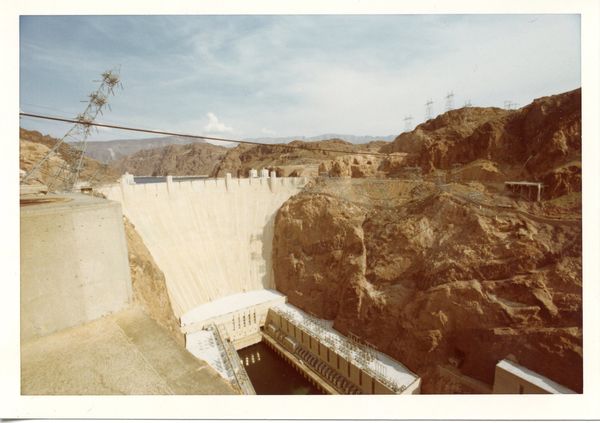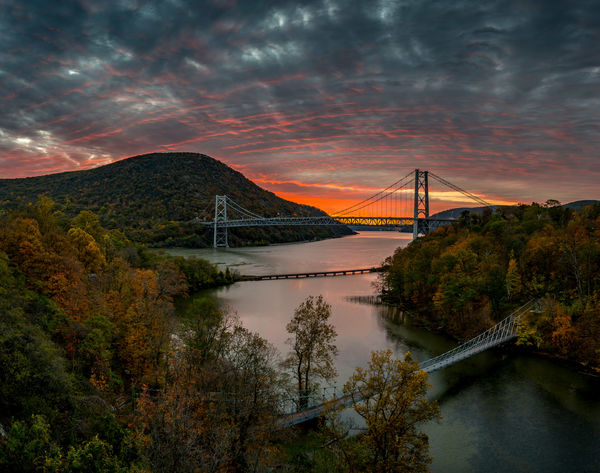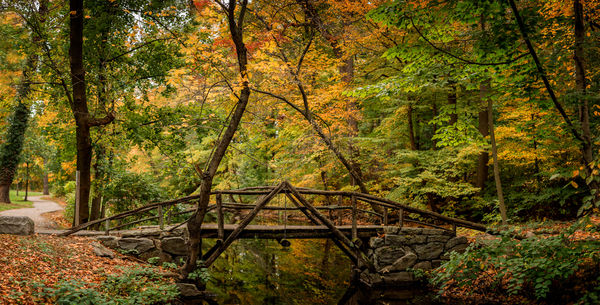Fisheye for landscape?
Feb 25, 2020 14:06:43 #
assman
Loc: Grand Rapids, MI
Hi All,
Would a 10-17 f3.5-4.5 make a good landscape lens? As in Grand Canyon? I have a 18-35 Sigma now that I was planning on taking.
Thanks
Would a 10-17 f3.5-4.5 make a good landscape lens? As in Grand Canyon? I have a 18-35 Sigma now that I was planning on taking.
Thanks
Feb 25, 2020 14:27:21 #
It depends on your desires/intentions/philosophy for creating landscape images.
I personally would not normally use a fisheye for landscape, unless I wanted a special effect.
My 18mm starts curving the horizon.
I personally would not normally use a fisheye for landscape, unless I wanted a special effect.
My 18mm starts curving the horizon.
Feb 25, 2020 14:41:32 #
I don't care for the fish-eye effect. I have a Tokina Pro 11-20mm f/2.8, but I'm using it on a crop body (1.6X). Back in my film days a 28mm was wide enough. When I was at the Grand Canyon, all I had was a 50mm on my 35mm film camera. I was able to borrow a 17mm for it at the Hoover Dam. It would take an 11mm on my crop body for the same angle of view.
This is a scan of the 4 X 6 print. No, the tower on the left is NOT distorted, it was on that angle.
This is a scan of the 4 X 6 print. No, the tower on the left is NOT distorted, it was on that angle.
Feb 25, 2020 15:12:14 #
larryepage
Loc: North Texas area
assman wrote:
Hi All,
Would a 10-17 f3.5-4.5 make a good landscape lens? As in Grand Canyon? I have a 18-35 Sigma now that I was planning on taking.
Thanks
Would a 10-17 f3.5-4.5 make a good landscape lens? As in Grand Canyon? I have a 18-35 Sigma now that I was planning on taking.
Thanks
I had a pro grade fisheye for my Olympus OM film cameras. I used it occasionally, primarily for special effects. I currently have a 14-24mm f2.8 wide angle zoom that I use fairly extensively on full frame Nikon cameras. I have never used either of these lenses very much at all for landscapes. The reason is that at the wide angles of view, the details that make wide views interesting become so small that they disappear, at least for the most part.
Mountains in the distance also suffer the same fate...shrinking from majestic heights to diminutive foothill .
Instead, I tend to capture and stitch multi -image panoramas when a wide view is called for. Doing so seems to provide me with a lot better control of both perspective and distortion, as well as preserving rendition of detail and mass. An overlay of three portrait images taken with a 24mm lens on a DX body provides essentially a 90 degree horizontal field of view while allowing a generous amount of overlap of images. I usually use LightRoom to build the panoramas.
On those few occasions when I do use the 14mm for landscapes, I always frame with the horizon cutting the center of the frame in order to prevent the natural distortion of the lens from bending it. It is then easy to crop away either a little sky or a little bit of foreground to achieve a more appropriate composition. If possible, I try to do the same when using that focal length to capture architectural images.
Other folks follow different paths, of course, but this is my preference.
Feb 26, 2020 05:45:21 #
assman wrote:
Hi All,
Would a 10-17 f3.5-4.5 make a good landscape lens? As in Grand Canyon? I have a 18-35 Sigma now that I was planning on taking.
Thanks
Would a 10-17 f3.5-4.5 make a good landscape lens? As in Grand Canyon? I have a 18-35 Sigma now that I was planning on taking.
Thanks
That is entire up to you. It would not be my first choice. I normally do stitched panos when I don't have enough width.
https://petapixel.com/2016/10/27/stitching-panorama-forget-wide-angle-lens-home/
Even though I have a 14-24 (on full frame), I prefer the extra resolution and relative freedom from distortion provided by a longer lens.
The first image was shot with a 45mm lens on a D810 (3 rows of 5 images). The second with an 85mm lens on a D810.
Feb 26, 2020 06:53:59 #
assman wrote:
Hi All,
Would a 10-17 f3.5-4.5 make a good landscape lens? As in Grand Canyon? I have a 18-35 Sigma now that I was planning on taking.
Thanks
Would a 10-17 f3.5-4.5 make a good landscape lens? As in Grand Canyon? I have a 18-35 Sigma now that I was planning on taking.
Thanks
I have both a Sigma 10-20mm wide angle and a Nikkor 8-15mm Fisheye: Both are great for landscapes, but have very different effects. I find that at 10mm, the fisheye captures more of the scenery than the wide angle. As for the distortion effect, they each have their own character.
One thought I have is that less people own a fisheye lens, so you're going to get more 'unique' photos.
Here are some examples of landscape with a fisheye (Nikkor 8-15mm) in Tibet and Iceland:
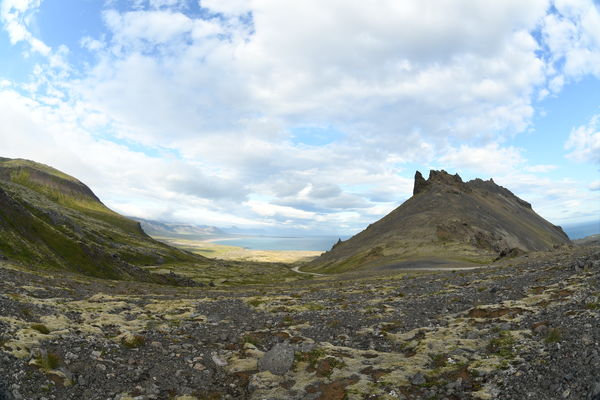
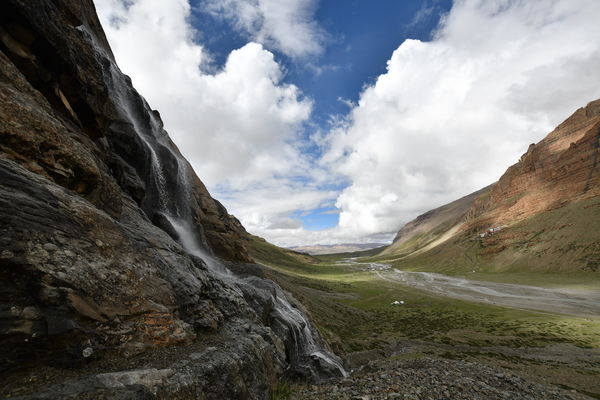
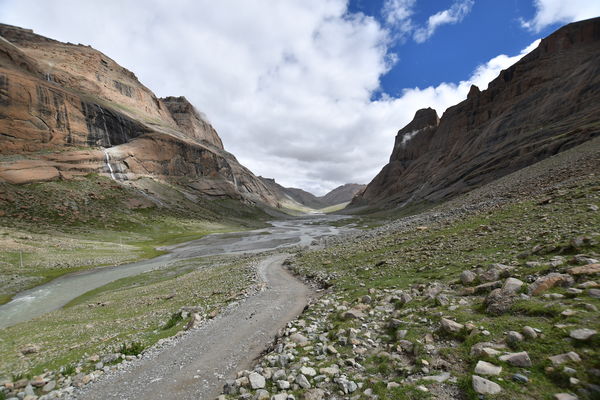
Feb 26, 2020 07:27:18 #
I do not tend to take my fish eye on holiday just for special effects as someone said.
I have not tried to reduce the effect with LRoom might be worth considering if weight is an issue
and you ALSO want these effects.
Holidays:
I find either my Sigma 10-20 wide angle OR a narrower zoom works very well using panorama
sweeps as required.
I use Lightroom adjusts for distortion before using the panorama feature.
I use Canon APC cameras and don't have experience with FFs or automatic panoramas e.g. Sony panorama mode other than on my Samsung phone!
An advantage of using the narrower zooms can be that you can get more light in (e.g. 2.8 Tamron 17-55) which is quite useful on holiday situations with lower light.
I have not tried to reduce the effect with LRoom might be worth considering if weight is an issue
and you ALSO want these effects.
Holidays:
I find either my Sigma 10-20 wide angle OR a narrower zoom works very well using panorama
sweeps as required.
I use Lightroom adjusts for distortion before using the panorama feature.
I use Canon APC cameras and don't have experience with FFs or automatic panoramas e.g. Sony panorama mode other than on my Samsung phone!
An advantage of using the narrower zooms can be that you can get more light in (e.g. 2.8 Tamron 17-55) which is quite useful on holiday situations with lower light.
Feb 26, 2020 09:56:30 #
gvarner
Loc: Central Oregon Coast
I wouldn’t use a fisheye unless you know how to manage it’s distortion to create the kind of effect that you want. It’s a specialty lens. I used a Sigma 10-20 on my D7000 crop sensor camera with good results in the Utah parks. Anything shorter than 15mm FF equivalent is considered a fisheye. Some folks advocate using a tripod and create panoramas to get that extra sweep.
Feb 26, 2020 10:47:50 #
gvarner wrote:
Anything shorter than 15mm FF equivalent is considered a fisheye.
Hmm... if you're saying that anything shorter than 15mm is the same in a fisheye as to a standard wide angle, I feel this is quite inaccurate.
There's a big difference between how my 10-20mm wide angle renders images at 10mm than how my 8-15mm fisheye does at the same focal length:
specifically, the fisheye bends lines while the wide angle is 'rectilinear' (keeps the lines straight).
See these two examples taken at the Taj Mahal from nearly the same spot at about 10mm each.
Pretty noticeable difference.
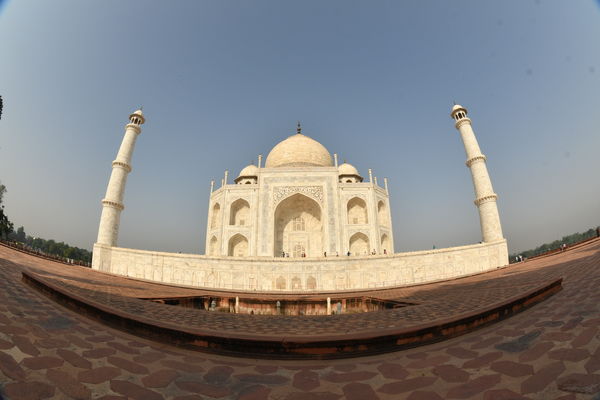
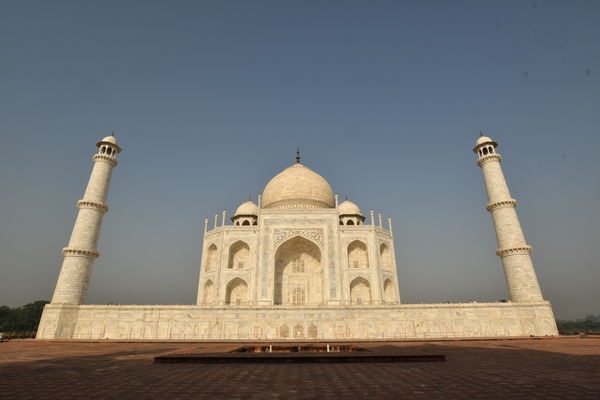
Feb 26, 2020 10:58:26 #
Fish is partly a matter of taste.
People are to some extent used to fisheye images in some situations and don’t really think about it. Trouble is it’s not always obvious when it will work out until after the fact.
Used carefully you can get a straight horizon line through the center of an image. Then depending on the rest of the scene it may not be obvious that a fisheye was used. It can be used a way to foreground objects very prominent - pebbled an inch or two from the lens become boulders.
People are to some extent used to fisheye images in some situations and don’t really think about it. Trouble is it’s not always obvious when it will work out until after the fact.
Used carefully you can get a straight horizon line through the center of an image. Then depending on the rest of the scene it may not be obvious that a fisheye was used. It can be used a way to foreground objects very prominent - pebbled an inch or two from the lens become boulders.
Feb 26, 2020 12:01:14 #
Throw in my 2 cents here. I have used a 8-15 mm with my Canon 7d (APC) and wasn't very impressed with it. I couldn't get the shots I was looking for with it. This passed Christmas I got a 5d IV (full frame) and it made all the difference in the world. I have used it for landscaping and get togethers (people, events.) Its not something I would use alot but it sure did give me a different look, not to mention if was fun to play around with. It is something I will keep in my bag.
Feb 26, 2020 12:21:05 #
Picture Taker
Loc: Michigan Thumb
I find "fish eye" starts at a lens below 17 or 178mm. I have the Canon 11 to ? (forgot) that does not distort or not much but it's costly. Remember the wider the lens the more it covers and the smaller things are in the picture. Some one once told me just back up--you can't usually, it's a different picture.
Feb 26, 2020 13:04:13 #
assman wrote:
Hi All,
Would a 10-17 f3.5-4.5 make a good landscape lens? As in Grand Canyon? I have a 18-35 Sigma now that I was planning on taking.
Thanks
Would a 10-17 f3.5-4.5 make a good landscape lens? As in Grand Canyon? I have a 18-35 Sigma now that I was planning on taking.
Thanks
Take a look at the Venus Laowa 9, 12 or 15mm Zero-D lenses (https://www.venuslens.net/shop/).
bwa
Feb 26, 2020 17:25:39 #
Picture Taker wrote:
I find "fish eye" starts at a lens below 17 or 178mm. I have the Canon 11 to ? (forgot) that does not distort or not much but it's costly. Remember the wider the lens the more it covers and the smaller things are in the picture. Some one once told me just back up--you can't usually, it's a different picture.
"Zoom with your feet", they say.
But you're right, it's a different picture - as you move away from an object, more of the background comes into view (and vice versa).
Bugs me everytime I hear it.
Feb 26, 2020 17:39:29 #
hammond wrote:
"Zoom with your feet", they say.
But you're right, it's a different picture - as you move away from an object, more of the background comes into view (and vice versa).
Bugs me everytime I hear it.
But you're right, it's a different picture - as you move away from an object, more of the background comes into view (and vice versa).
Bugs me everytime I hear it.
I'd be concerned about zooming with my feet with an ultra-wide lens next to a big, mile-deep hole ...

For our OP, if you hike down into the canyon, I'd expect some interesting fisheye opportunities from the trail looking back out of the canyon with the wall near and the sky and canyon depth being 'far'. That said, you'll probably find a 24-70 lens or 70-300 lens to be more useful for the vast size and distances.
16mm from the Bright Angel Trail, note the hikers on the left and a few more further down in the middle.
Bright Angel Trail by Paul Sager, on Flickr

If you want to reply, then register here. Registration is free and your account is created instantly, so you can post right away.


